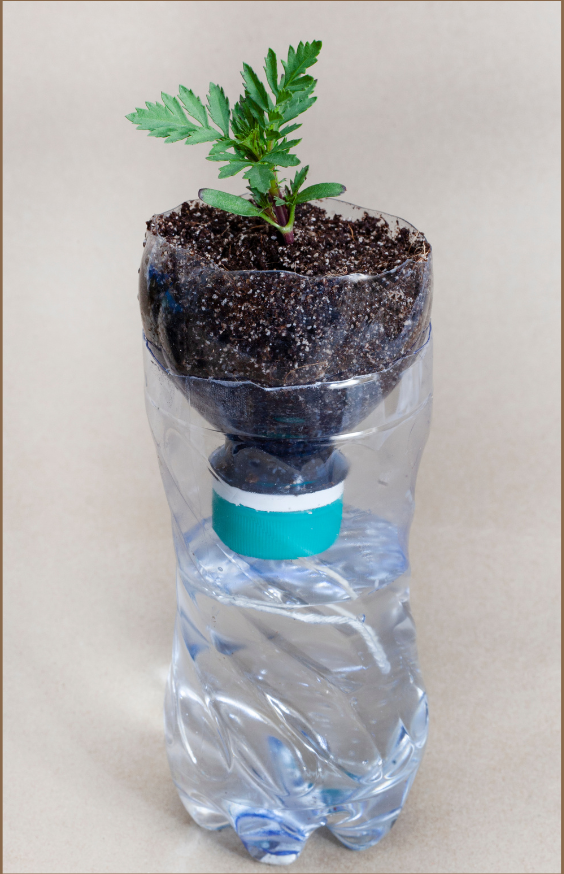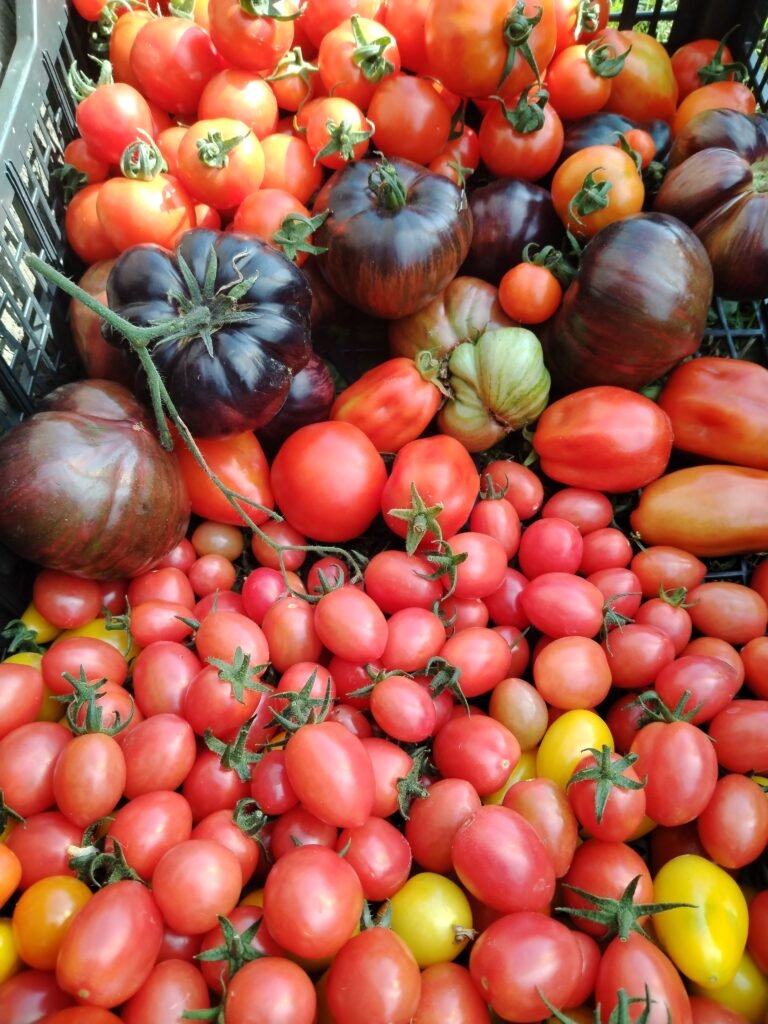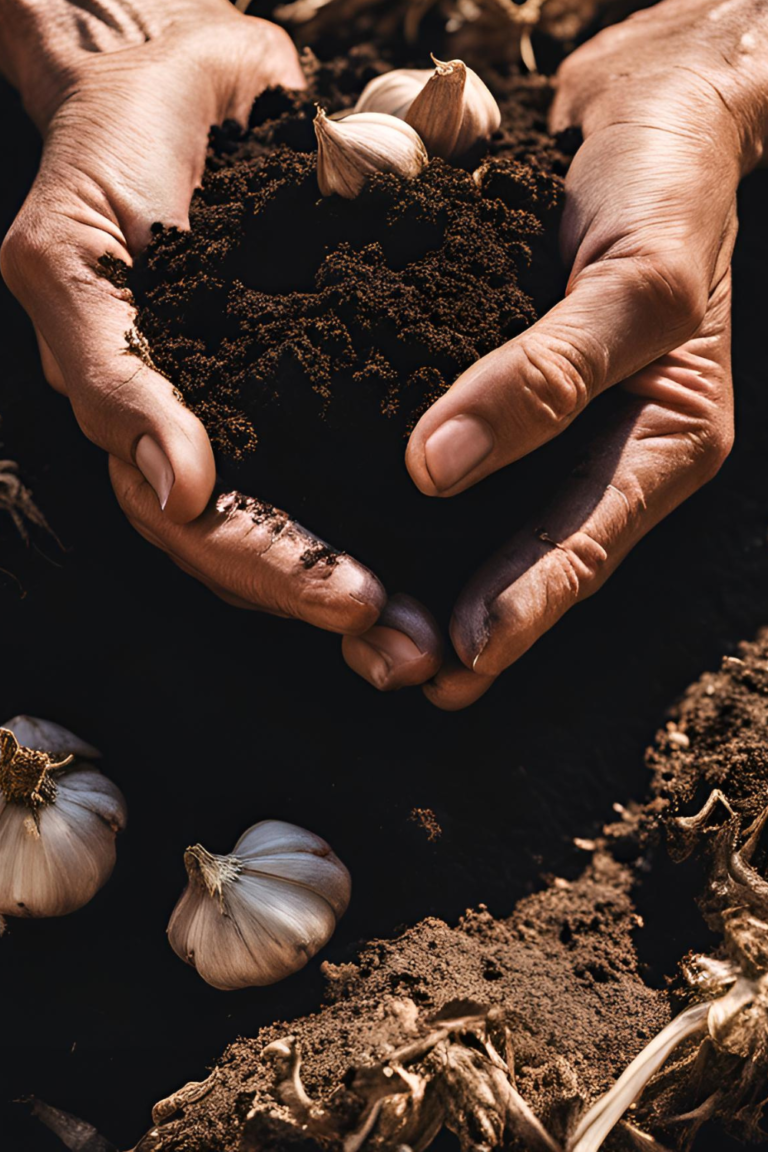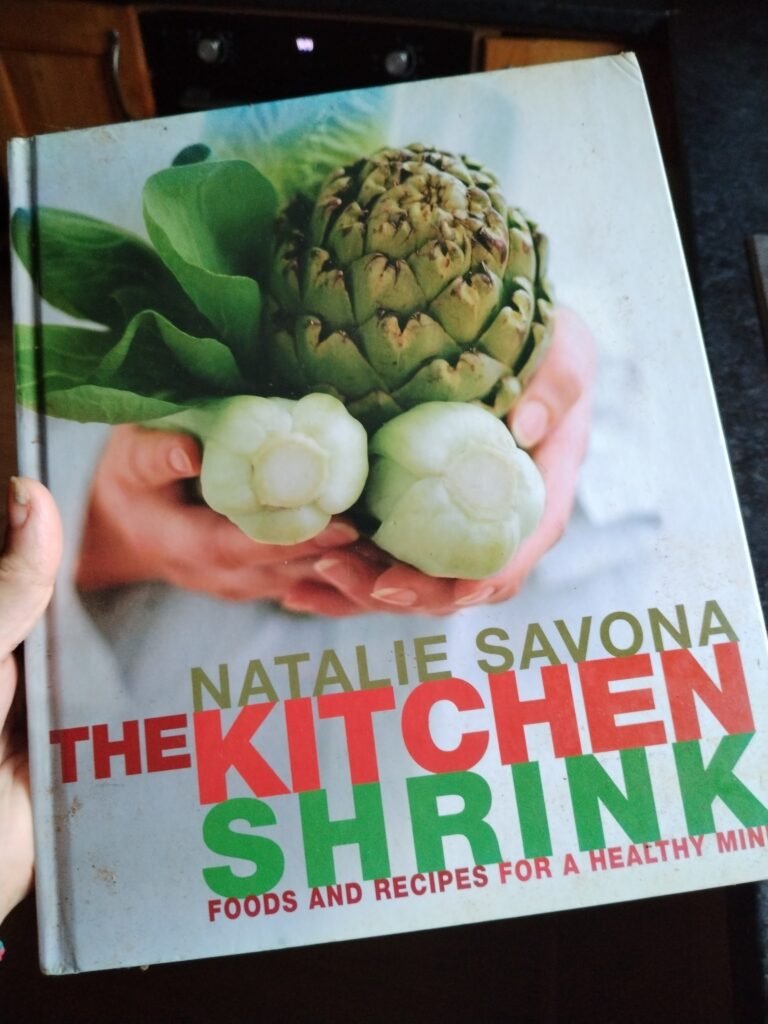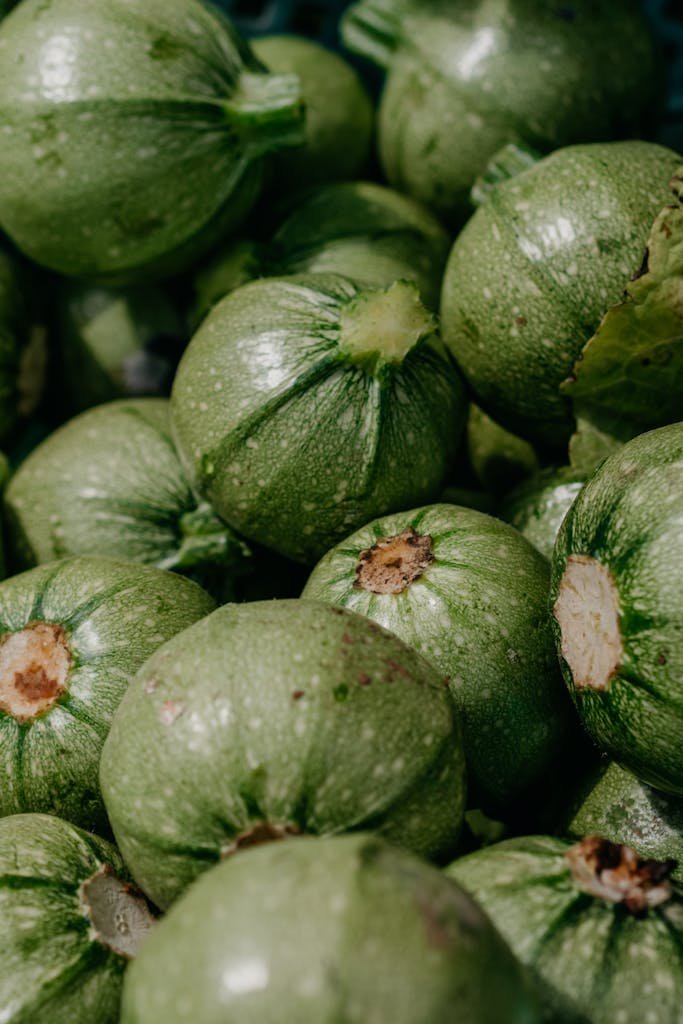
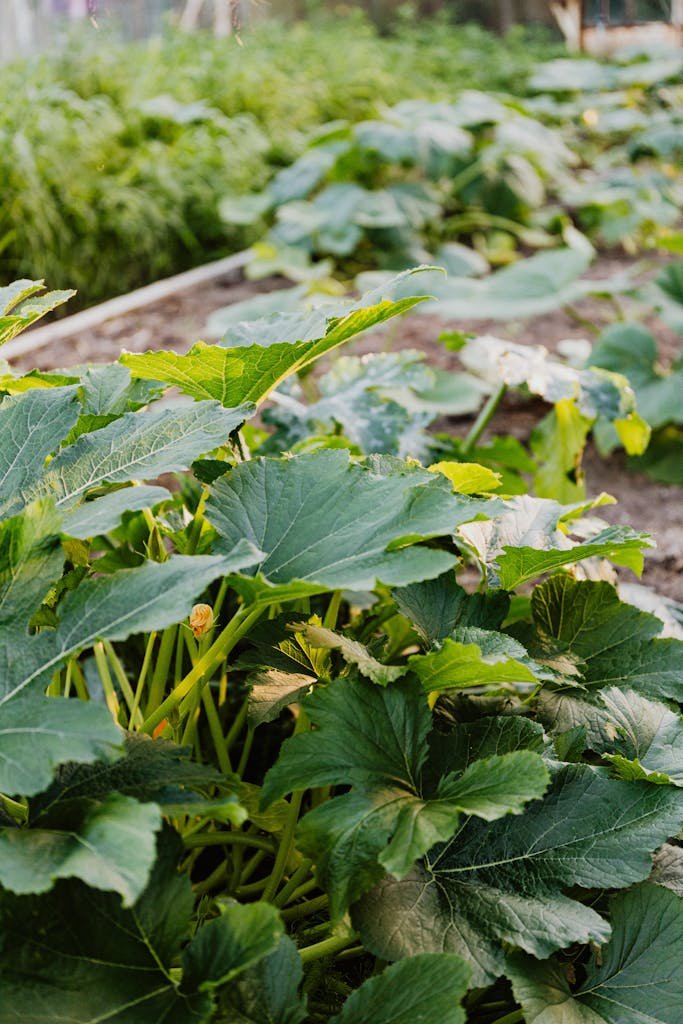
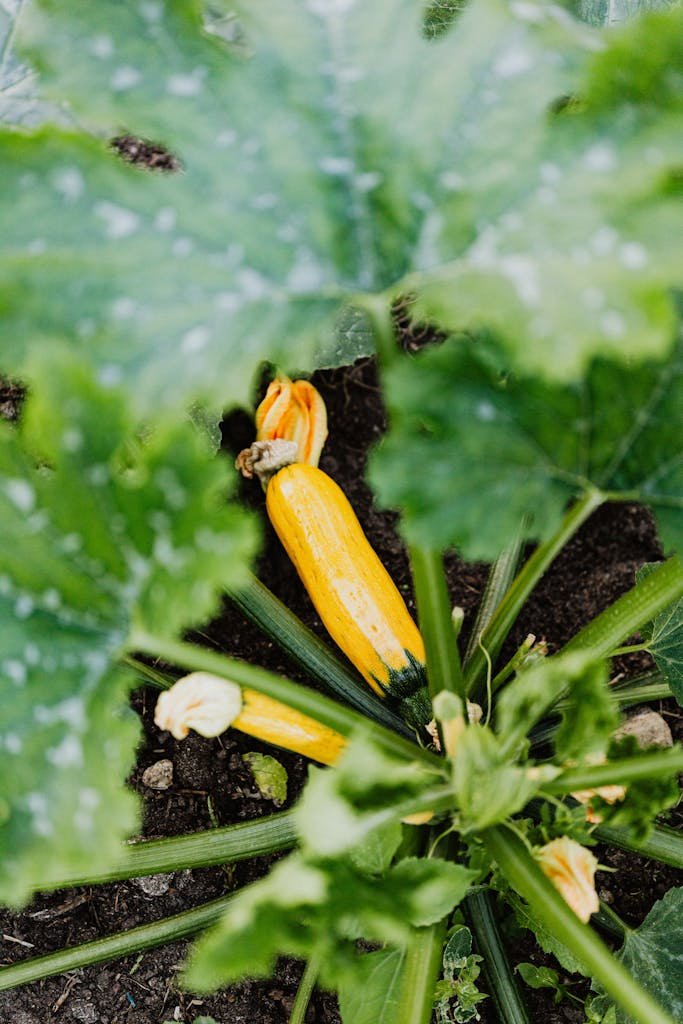
Growing courgettes always seemed simple to me — I thought they were just those long, green vegetables everyone grew in summer. I never gave them much thought beyond that. But when I started growing courgettes myself, I was amazed by what I found! Did you know there are over 60 different varieties of courgettes? I certainly didn’t, and it opened up a whole new world in my little garden.
At first, I only planted the usual dark green kind, the one you see in every supermarket. But as I explored seed catalogues and swapped seeds with fellow gardeners, I stumbled upon golden courgettes that glowed like little suns. Then there were the pale green ones, almost silver in the sunlight. Some were round like tennis balls, while others looked like tiny flying saucers! Each variety had its own unique look, flavor, and texture — some sweet and tender, others nutty or with a lovely bite when cooked.
What surprised me most was how different they tasted depending on the type and how I used them in the kitchen. Now, I can’t imagine a summer garden without a mix of shapes and colours. Growing courgettes isn’t just about filling your plate — it’s about discovering new favourites and having fun along the way.
So if you’re ready to try something beyond the basic green courgette, let’s dive into how to grow your own bumper harvest and enjoy all the variety these plants have to offer!
Why Grow Your Own Courgettes?
There are so many wonderful reasons to grow your own courgettes! First of all, the flavour of homegrown courgettes is hard to beat. When you pick them fresh from the garden, they’re sweeter, softer, and just bursting with goodness. Plus, you know exactly how they were grown — no chemicals, no long trips across the country, and no sitting for days on a shop shelf.
Another reason is that growing courgettes at home helps the planet. When you harvest your own veggies, you’re cutting down on food miles — that’s the distance food travels to get to your plate. It may not seem like much, but every little bit helps! Even better, you can say goodbye to all that plastic packaging that shop-bought courgettes often come in. Instead, you can simply pop them into your basket or straight into the kitchen.
And let’s not forget how good courgettes are for you. They’re packed with vitamins, fibre, and water, which help keep your body healthy and strong. Whether you’re slicing them into salads, grilling them, or popping them into a stir-fry, they’re an easy way to add something tasty and healthy to your meals.
So, with all these wonderful benefits — from fresh flavour to helping the environment — why not give growing courgettes a go? You might be surprised at just how easy and rewarding it can be!
Choosing the Best Courgette Varieties for Your Garden
One of the best bits about growing courgettes is picking from all the fun and tasty types! There are so many shapes, colours, and sizes — whether you have a big veg patch or just a pot by the door, you can find the perfect one.
Popular varieties: green, yellow, round, climbing, and stripy courgettes
It’s true — courgettes aren’t just plain green! There’s a whole rainbow of choices.
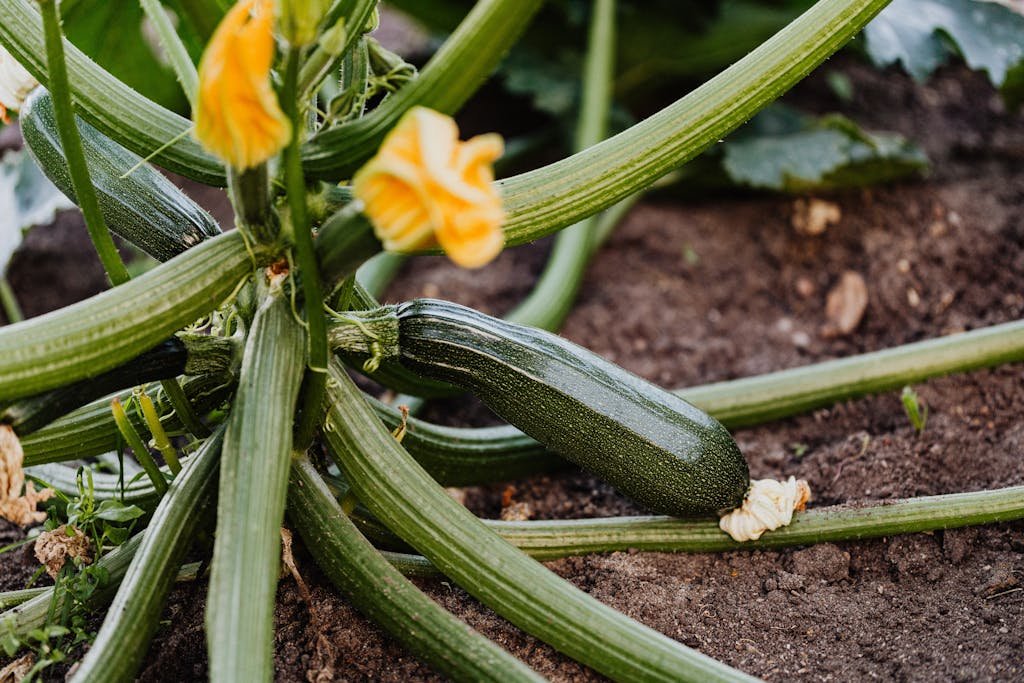
GREEN
‘Defender’ – This trusty variety gives you loads of dark green courgettes and stands up well to pests.
‘Ambassador’– Another easy grower that produces plenty of straight, dark green fruits with a great flavour.

YELLOW
‘Gold Rush’ – A bright yellow courgette that’s mild and sweet — perfect for slicing raw or cooking.
‘Soleil’ – With sunny golden skins, ‘Soleil’ is a real eye-catcher and keeps producing through summer.

ROUND
‘Eight Ball’– These round, dark green courgettes are fun for stuffing or roasting whole.
‘Rondo de Nice’ – A lovely pale green round courgette with a tender skin and rich flavour.
CLIMBING
‘Black Forest’– A climbing courgette that grows happily up a trellis, saving you space.
‘Tromboncino’– This one’s a bit quirky! It climbs and gives long, curved fruits that are fun to grow and tasty too.
STRIPY
‘Tapir’– This pretty courgette has dark and light green stripes and a firm, nutty flavour.
‘Striato d’Italia’– An heirloom variety with soft green stripes and a tender texture — brilliant grilled or roasted.
Compact courgette types for small spaces or containers
If you don’t have much space, don’t worry — there are great compact types too!
‘Patio Star’ – This small courgette plant is perfect for pots, producing tender green fruit on a tidy little plant.
‘Midnight’ – Another compact variety, this one gives you shiny dark courgettes on a plant that won’t take over your patio.
When and Where to Plant Courgettes
Getting your courgettes off to a good start is easier than you might think! You just need to plant them at the right time and give them a cosy spot to grow. Let’s break it down so you can have a patch full of healthy, happy plants.
Best planting time for different climates (UK, Ireland, temperate zones)
Courgettes love a bit of warmth! In places like the UK and Ireland, it’s best to wait until all risk of frost has passed. That’s usually around late May or early June. If you want a head start, you can sow seeds indoors in pots about four weeks before planting them out. In milder temperate zones, you might be able to plant outdoors a little earlier — just be sure the soil has warmed up!
Ideal soil conditions: pH, drainage, and enrichment
Courgettes are hungry plants, so they’ll thank you for rich, well-fed soil. They like soil that drains well so their roots don’t get soggy. Adding lots of compost or well-rotted manure before planting will really help them thrive. A slightly acidic to neutral soil (pH 6-7) is just right — but don’t stress too much. Good compost will usually balance things out. You can check your soil with this simple pH meter.
Sunlight and shelter requirements for healthy growth
Courgettes love the sun! They’ll grow best in a spot that gets at least six hours of sunlight each day. If you can, plant them somewhere sheltered from strong winds, as their big leaves can get a bit battered. A sunny, sheltered corner of your garden is perfect!
How to Sow and Care for Courgette Plants
Once you’ve picked your courgette seeds, it’s time to get growing! Don’t worry — courgettes are one of the easiest veg to start, and with a few simple steps, you’ll be on your way to tasty harvests all summer long.
Starting from seed indoors vs. direct sowing outdoors
You can start courgettes from seed indoors if you want a head start. Just plant one seed per small pot — a 9cm pot works well. Pop them on a bright windowsill or in a greenhouse. After about 3-4 weeks, they’ll be ready to move outside, as long as the frosts are gone.
If you’d rather sow straight into the soil, wait until the weather’s warmer (usually late May or early June). Make a small hole, drop in a seed, and cover it gently. It’s as easy as that!
Watering and feeding routines for optimal yields
Courgettes are thirsty plants, so try to water them regularly — especially in hot weather. A good soak at the base of the plant is better than little splashes here and there. Adding a liquid feed like this one every couple of weeks will really help . If you’re growing in pots, they’ll need even more care, as pots dry out faster!
How to protect young plants from slugs and pests
Slugs love baby courgette plants, so it’s worth keeping an eye out! You can try putting down organic slug pellets, or make little collars from recycled plastic bottles to guard the stems. If you’ve got a garden buddy like a hedgehog or frogs, even better — they’ll help keep pests at bay!
Supporting climbing courgette varieties
If you’re growing a climbing courgette, like ‘Black Forest’ or ‘Tromboncino’, you’ll need to give it something to scramble up. A strong trellis or wigwam of bamboo canes works brilliantly . Just gently tie the plant as it grows to help it along.
Common Problems When Growing Courgettes (and How to Fix Them)
While courgettes are usually cheerful, easy-to-grow plants, now and then you might run into a few hiccups. The good news is that most problems are easy to spot, and with a few simple steps, you can sort them out before they cause too much trouble. So, let’s take a closer look at what might go wrong — and, more importantly, how to make it right!
Recognising and treating powdery mildew
First of all, let’s talk about powdery mildew. This is one of the most common issues, and it often appears during warm, dry spells. You’ll notice a white, flour-like coating on the leaves — almost as if they’ve been dusted with powder. If you catch it early, don’t panic! Simply snip off the worst-affected leaves to stop it from spreading. Next, give your plants a deep drink at the roots, being careful not to splash the leaves. In addition, a homemade spray of 1 part milk to 9 parts water can work wonders. Alternatively, you could try an organic mildew spray if you want a ready-made solution.
Dealing with blossom-end rot
Next up is blossom-end rot, which can be a bit disheartening. This happens when your courgette looks perfect at first glance, but the bottom turns dark, soft, and mushy. Usually, this means the plant isn’t getting enough water or calcium. To prevent this, try watering regularly and mulching around the base to lock in moisture. On top of that, a liquid seaweed feed can give your plants the boost they need to stay strong.
Preventing pest infestations (slugs, aphids, squash bugs)
Finally, let’s tackle pests. Slugs often lead the charge, but aphids and squash bugs can also sneak in. To keep slugs at bay, you might use copper tape, wool pellets, or eco-friendly pellets . Besides that, for aphids, a quick spray with the hose or a gentle wipe with soapy water usually does the trick. And as for squash bugs, be sure to check under the leaves for eggs and remove them before they hatch. What’s more, encouraging helpful creatures like ladybirds and frogs can really make a difference — they’ll gobble up pests and help you keep your plants safe.
Harvesting and Storing Your Courgettes
After all that care and attention, it’s finally time for the best part — harvesting your homegrown courgettes! But when exactly should you pick them, and how can you make sure they stay fresh? Let’s walk through it together so you can enjoy the fruits of your labour for as long as possible.
When and how to pick courgettes for best flavour
First of all, the trick is to pick courgettes while they’re still young and tender. Ideally, they should be about the length of a large finger or maybe a bit longer — around 15 to 20 cm (6-8 inches). If you leave them too long, they can turn watery or a little tough. So, check your plants every couple of days, especially in warm weather, because courgettes can seem to double in size overnight! To harvest, simply cut the stem with a sharp knife or use garden snips , taking care not to damage the plant.
How to store courgettes to keep them fresh
Once picked, courgettes don’t like being left out in the sun or heat. Instead, pop them in the fridge’s vegetable drawer. They’ll stay fresh for about a week, though they’re always tastiest when eaten sooner rather than later. For extra crispness, you could store them in a paper bag or wrap them in a tea towel to keep away moisture.
Creative ideas for using up a courgette glut (freezing, preserving, sharing!)
Sometimes courgette plants are so generous that you end up with more than you can handle. But don’t worry — there are lots of ways to use them up! You could slice and freeze courgettes for soups and stews later in the year. Or, why not try making courgette chutney or even pickles? There are plenty of simple recipes out there. And of course, sharing with neighbours and friends is always a lovely way to spread the joy of your harvest. After all, who doesn’t love a fresh, homegrown courgette gifted with a smile?
Companion Planting and Eco-Friendly Tips
If you’re like me, you want your garden to thrive in the most natural way possible. That’s where companion planting and a few earth-friendly tricks can really make a difference! Let’s look at some easy ways to help your courgettes grow strong, healthy, and full of flavour — without needing harsh chemicals.
Best companion plants for courgettes (e.g., nasturtiums, beans)
First off, planting the right friends nearby can really help your courgettes. Nasturtiums not only brighten up the garden, but they also help keep aphids away — and they’re edible too! Beans are another great choice. They fix nitrogen in the soil, which gives your courgettes a natural boost. You might also consider planting marigolds or sweetcorn close by for added benefits.
Natural ways to deter pests without chemicals
Instead of turning to sprays, you can protect your plants in gentler ways. Try laying down copper tape around pots to keep slugs at bay , or set out beer traps (they really work!). A sprinkle of crushed eggshells around young plants can also help. And don’t forget — a healthy garden full of beneficial insects like ladybirds will naturally keep pest numbers down.
Encouraging pollinators for better fruiting
Courgettes need pollinators like bees and hoverflies to give you lots of tasty fruits. So, plant plenty of flowers nearby — lavender, borage, and sunflowers are brilliant choices. And here’s another tip: if the weather is cool or the bees are slow, you can hand-pollinate your courgettes! It’s simple and fun, and it can really boost your harvest.
Conclusion
So, there you have it — everything you need to know about growing your own courgettes, from picking the perfect seeds to enjoying the tasty rewards. It might feel like a lot at first, but once you get started, you’ll see how easy and fun it really is. Before you know it, you’ll be heading out to the garden each morning, basket in hand, excited to see what’s ready to pick!
Even better, growing courgettes at home means you get to enjoy them at their very best. The flavour is fresher, the texture is just right, and you’ll feel proud knowing you grew them yourself. Plus, it’s such a lovely way to connect with nature and add a bit of green magic to your day.
And remember, when you find yourself with more courgettes or courgette flowers than you expected (because let’s face it — they can really surprise you!), there are so many tasty ways to use them up. One of my absolute favourites is stuffing the delicate, beautiful courgette flowers. It’s easier than you might think, and the result is pure joy on a plate. You can check out my simple recipe for stuffed courgette flowers right here.
So, why not give courgette growing a try? Your garden — and your taste buds — will thank you for it!

